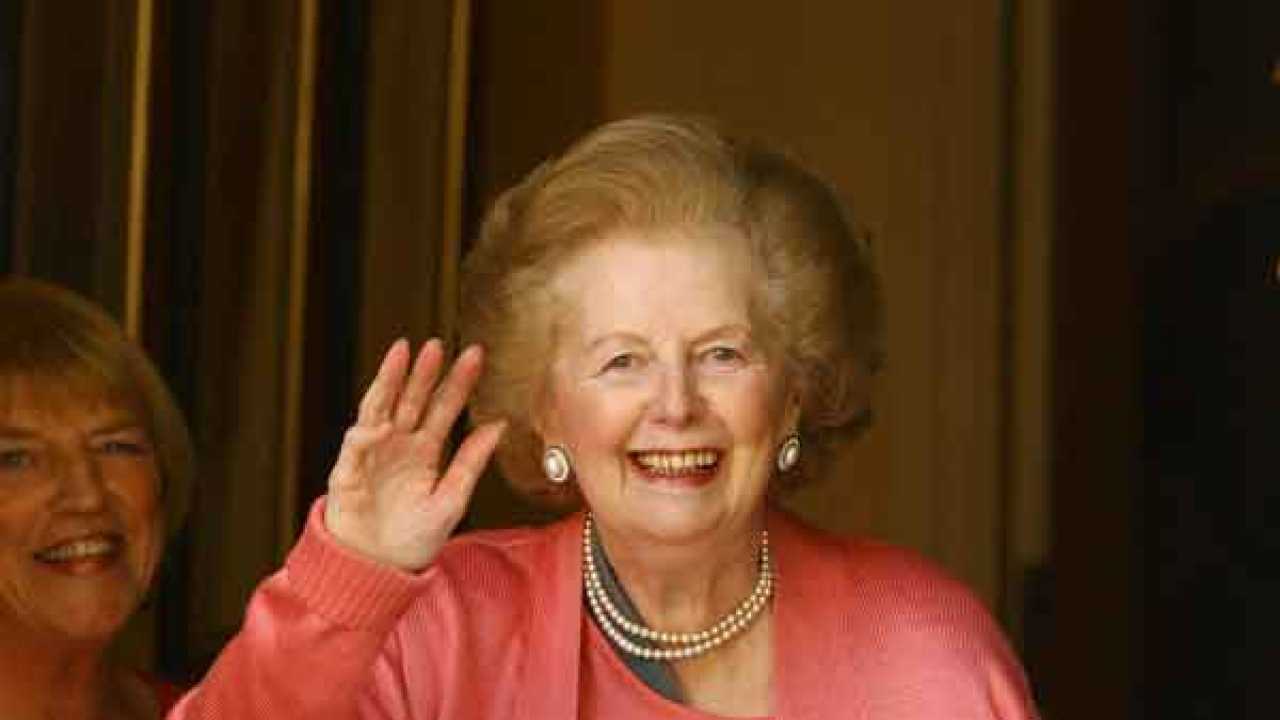Play all audios:
Baroness Thatcher's children and closest colleagues gather for brief private ceremony in Palace of Westminster. Footsteps on flagstones echoed through the vast hall, breaking the cold,
draughty silence. Faint sunlight crept in from the outside world through the stained glass; otherwise, the hall was dim. Darkness spread from the high rafters down the dingy stone walls.
Into this echoing gloom, the mourners slowly filed. The day before her funeral, a chapel service was being held for Baroness Thatcher in the Palace of Westminster. Tucked away in a poky
corner of Westminster Hall, up a short flight of steps, and guarded by wrought-iron gates, was a small door headed, "Chapel of St Mary Undercroft". It was here that, yesterday at
three o'clock, Lady Thatcher's coffin was brought. As a television news helicopter clattered overhead, crowds gathered outside Parliament to watch the hearse draw up at Old Palace
Yard. Solemnly the bearers hoisted the coffin on to their shoulders. The union flag which draped over it fluttered in the breeze. Nestled in the wreath was a small white card. It read,
simply, "Beloved Mother - always in our hearts". Inside, the entrance to the chapel had been roped off. Reflecting Lady Thatcher's wishes, this was to be a short, small,
strictly private service: around 100 mourners, including family, senior figures from the Commons and the Lords, and members of staff who had worked closely with her. The media were excluded.
Mourners arrived clutching pale blue invitation cards. There was Conor Burns, the Conservative MP, who was one of Lady Thatcher's closest friends in her last years. There was the
Commons Speaker, John Bercow, and his deputies Lindsay Hoyle and Nigel Evans. There was Lord Parkinson, who served in several of Lady Thatcher's Cabinets; also Lord Wakeham, who was her
government chief whip, and Lady Wakeham, who once worked as her secretary. Other mourners included Baroness Williams of Crosby; Francis Maude, the minister for the Cabinet Office; Sir
George Young, the Chief Whip, and Andrew Tyrie, chairman of the Treasury select committee. Among the Conservative MPs were Nicholas Soames, Bernard Jenkin, Claire Perry and Therese Coffey.
Iain Duncan Smith, the Work and Pensions Secretary, was one of the last to arrive. Three of the cleaners who worked in the former prime minister's office also attended. One journalist
was admitted: Charles Moore, the former editor of The Daily Telegraph and Lady Thatcher's official biographer. After they had entered the chapel, policemen cleared the Westminster Hall
steps of tourists and reporters, before the arrival of the final guests: the family. At four minutes to four, they appeared: Lady Thatcher's son, Sir Mark, and her daughter, Carol. She
was wearing dark glasses, her head bowed. The chapel was completed for Edward I in 1297, and restored in the 1860s following the great fire that tore through the Palace of Westminster in
1834. Inside, it is busily decorative, all reds and golds and greens. Brass angels stand in front of the altar. Stained glass depicts the life and death of St Stephen. The service, led by
the Very Rev John Hall, the Dean of Westminster, began at four o'clock sharp. It lasted 12 minutes. Afterwards we learnt its contents. The front of the order of service read,
"Reception of the body of the Baroness Thatcher of Kesteven". The service began with Psalm 139: "O Lord, thou has searched me, and known me." Then a reading from the
Gospels, John 14: 1-6, in which Jesus comforts his disciples. The King James version begins, "Let not your heart be troubled: ye believe in God, believe also in me. In my Father's
house are many mansions: if it were not so, I would have told you. I go to prepare a place for you." The passage ends with Jesus saying, "I am the way, the truth, and the life: no
man cometh unto the Father, but by me." Prayers were conducted by the Speaker's Chaplain, the Rev Rose Hudson-Wilkin, who was to keep vigil in the chapel throughout the night. One
prayer began, "Remember, O Lord, this our servant Margaret." After prayers, each mourner in turn bowed to the coffin on the way out. Police cleared the Westminster Hall steps once
more for the mourners to leave. "No photography, please," ordered an officer. First to emerge from the chapel were Sir Mark and Carol. Seeing his sister's distress, Sir Mark
placed a comforting hand on her shoulder. Making his way back towards the Commons, Burns was in tears. The service, he said, had been very moving. "The wonderful thing was that it was
about Margaret - not about the prime minister, not about Baroness Thatcher, but about Margaret as a person, as a very human, human being. "In a way," he said, almost overcome,
"it was an even better opportunity to say goodbye to her than tomorrow will be."

